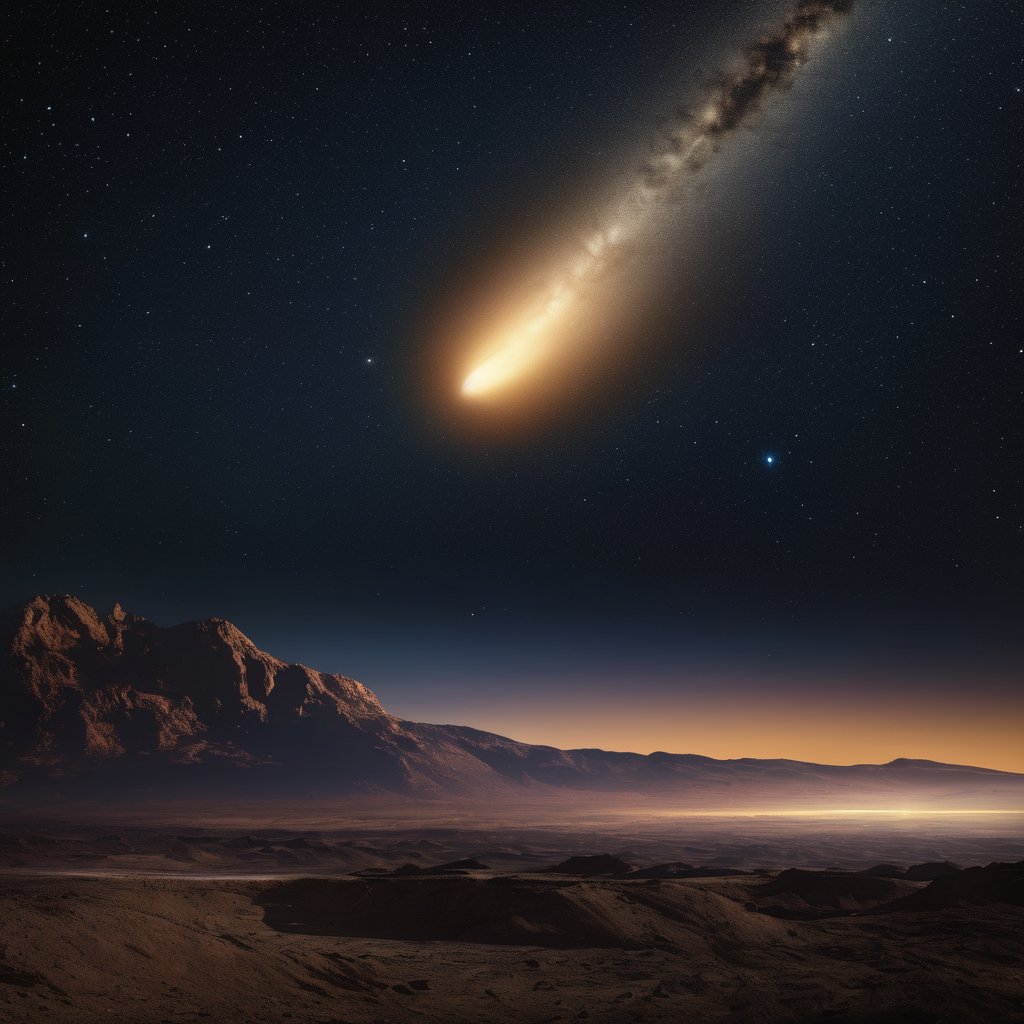The recent study of interstellar objects like ‘Oumuamua, 2I/Borisov, and 3I/ATLAS has sparked significant excitement and intrigue among astronomers. These celestial visitors offer a rare glimpse into the materials and objects originating from beyond our Solar System. Dr. Bryce Bolin emphasizes the importance of distinguishing between theoretical expectations and actual observations, suggesting that understanding these objects can reshape our theories about cosmic bodies.
‘Oumuamua, the first detected interstellar object, demonstrated behavior similar to that of a comet, exhibiting non-gravitational perturbations typically associated with the sublimation of gases. This reaction supports the idea that interstellar objects are indeed comet-like, aligning with our expectations of comet prevalence in extrasolar systems. The subsequent discovery of 2I/Borisov and 3I/ATLAS, both identified as comets, furthers this perspective, suggesting that comet-like material ejected into space reflects our current understanding of planet formation around other stars.
In-depth studies of 3I/ATLAS have provided insight into its composition, with observations revealing potential cometary gases such as cyanogen and carbon compounds. These observations were conducted using various instruments, including the Keck Telescope, and further data from the James Webb Space Telescope is anticipated, which will enhance our ability to detect emissions beyond the visible and near-infrared spectrums.
The trajectory and origin of 3I/ATLAS present a challenge, given the complex and variable gravitational potential of our galaxy. Over time, interstellar objects may encounter various galactic features, such as spiral arms and molecular clouds, complicating pinpointing their precise origins and paths. While some theories propose that these objects are older than anything in our Solar System, tracking their paths over billions of years remains inherently difficult.
Interestingly, 3I/ATLAS is expected to approach the orbit of Mars, potentially providing an opportunity for spacecraft in the vicinity to gather additional data. The object will remain observable from Earth until it enters a solar conjunction, temporarily obscured by the Sun. However, viewing prospects will reopen once Earth completes its orbit around the Sun, offering further opportunities for observation.
The ongoing study of interstellar objects not only enriches our understanding of cosmic phenomena but also stirs the imagination, offering a glimpse into the mysteries that await exploration beyond our Solar System.
